Canary Islands DOs (Part II)
The Canary Islands form an archipelago close to the west African coast. Their excellent climate and beaches are perfect for a Spanish summer camp, so keep it in mind if you're traveling with children. The wines from the Canaries tend to be sweet, white, and very refreshing, which is why they're so popular.
DO Lanzarote
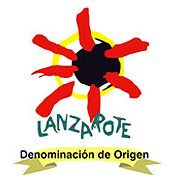
Lanzarote is the oldest and most eastern island, and thus the closest to Africa. It's sometimes referred to as "the island of volcanoes", because of the strong volcanic activity it had in the 1700s. In Lanzarote you can find the Timanfaya National Park, a very touristic landmark famous for its volcanoes.
Being so close to Africa, Lanzarote has a subdesertic climate with little rain. The floor is covered in volcanic sediments, so holes are dug in the ground to reach the organic soil in order to plant the vine. Once they're planted, a small wall is put up in a semicircle around the plant to protect it from the wind.
Although the vine is planted throughout the island, there are certain parts which are more prolific to high quality fruits, like La Geria, Tías-Masdache, San Bartolomé, Tinajo and Ye-Lajares. In Lanzarote, like in most of the islands, the white grape is more common than the red, and the Malvasía variety stands out among the others. However, other varieties are also accepted in the production of these wines from the Canaries: Breval, Burrablanca, Diego, Moscatel, Listán and Pedro Ximénez. As reds are barely produced in Lanzarote, only two types are used: Negramoll and Listán negro.
The alcohol levels in the wines of DO Lanzarote are as follows:
- Red wine, with a minimum alcohol content between 11% and 14.5%
- White wine, with a minimum alcohol content between 10.5% and 14.5%
- Rosé wine, with a minimum alcohol content between 11% and 14%
DO La Palma
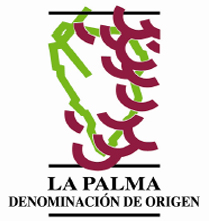
La Palma, historically known as San Miguel de La Palma, is one of the youngest islands in the Canary archipelago. It emerged from a marine volcano submerged 13000 feet, and its rough and steep land makes it the third tallest island in the world, after Pico in Azores and Fogo in Cabo Verde.
The DO La Palma was established in 1994. Like El Hierro, La Palma wasn't affected by the phylloxera plague, so their vines are mostly around 50 years old, and some from the Spanish class Malvasía are over 100 years old. The plantations in La Palma are divided in three main areas: Fuencaliente in the southwest, Hoyo del Mazo in the east and Subzona Norte in the north. There are many grape varieties allowed, but the more popular ones are the Malvasía, Verdello and Gual for whites, and the Negramoll for reds.
As in most of the other islands, white wines have a higher production than red wines, but there's also another type of wine from the Canaries that's only found in La Palma: Vino de Tea, which is aged in barrels of Canary Island Pine ("pino tea" in Spanish). This gives them a very distinct flavor. These wines from the Canaries have the following alcohol content:
- Red wine, with a minimum alcohol content between 12% and 14%
- White wine, with a minimum alcohol content between 11% and 14.5%
- Rosé wine, with a minimum alcohol content between 11% and 13%
- Classic Malvasía, with a minimum alcohol content between 15% and 22%
- Dry Malvasía, with a minimum alcohol content between 14% and 16%
- Sweet wine, with a minimum alcohol content between 15% and 22%
- Vino de Tea, with a minimum alcohol content between 15% and 22%
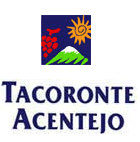
DO Tacoronte - Acentejo
DO Tacoronte-Acentejo is the first of Tenerife's designations of origin. Don't you want to learn more about it? We have a whole page dedicated to this special designation of origin.
DO Valle de Güimar
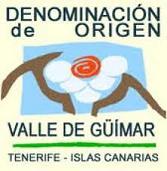
The Güimar Valley is found in Tenerife. In reality it's not a regular valley at all, but a rift valley formed by a great mass of land moving towards the sea. In this setting is where the vines of the DO Valle de Güimar are planted, mostly of the white variety, like Gual, Malvasía o Verdello. The reds are less common but still produced, mainly Listan Negro, Malvasia rosada or Negramoll variety.
The wines from the Canaries of the DO Valle de Güimar are:
- Red wine, with a minimum alcohol content of 11.5%
- White wine, with a minimum alcohol content of 10%
- Rosé wine, with a minimum alcohol content of 10.5%
- Liquor wine, with a minimum alcohol content of 15%
- Classic sweet wine, with a minimum alcohol content of 15%
- Sparkling wine, with a minimum alcohol content of 11%
DO Valle de la Orotava

Like those of the DO Valle de Güimar, the vines from the DO Valle de Orotava are planted in a rift valley formed by a great mass of land moving towards the sea. The Orotava Valley is on the north of Tenerife, opposite the Güimar Valley, and it was there that the conquest of the Canaries ended on the 25th of July, 1496.
The vine plantation spans from the very shore of the Atlantic to the slope of the Teide, approximately at 980-2300 feet of altitude, and benefits from the humid trade winds of the Atlantic. The DO Valle de la Orotava was established in 1995, and mostly produces white wine, which is the common practice in the islands. The main grape varieties used in these wines from the Canaries are Listán Blanco, Gual, Malvasía, Verdello and Vijariego in whites; Listán negro, Malvasía rosada and Negramoll for reds.
The wines of the DO Valle de la Orotava are:
- Red wine, with a minimum alcohol content of 11.5%
- White wine, with a minimum alcohol content of 11%
- Rosé wine, with a minimum alcohol content of 11%
- Liquor wine, with a minimum alcohol content of 15%
- Classic sweet wine, with a minimum alcohol content of 15%
- Sparkling wine, with a minimum alcohol content of 11%
DO Ycoden Daute Isora
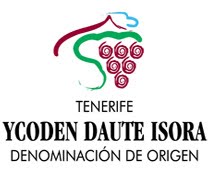
The DO Ycoden Daute Isora lies in the northwest of Tenerife and gets its peculiar name from the prehispanic reigns of Ycoden and Daute and the lands of Princess Isora. It was in this region that the world famous wine from the Canaries was produced in the XVI century, a wine that was coveted by every king. The designation of origin was established in 1994, keeping in mind the history of the area.
The DO Ycoden Daute Isora is mostly known for its dry white wines, highly considered among wine lovers, but it also produces reds, although in a significantly lower volume. Around 80% of the planted vines belong to the Listán grape in its both varieties (red and white), and the other 20% is used for other varieties like Tintilla, Negramoll, Gual or Malvasía.
The wines of the DO Ycoden Daute Isora are:
- Red wine, with a minimum alcohol content between 12% and 14%
- White wine, with a minimum alcohol content between 11% and 14%
- Rosé wine, with a minimum alcohol content of 11.5% and 14%
- Classic sweet wine, with a minimum alcohol content between 15% and 22%
Spanish Wine History
Spanish Wine Regions and DO
Spanish Wine Tours
Top Spanish designations of origin
Best Spanish Wines
Spanish Wine Production
Spanish Wine Types
Spanish Grapes
Spanish Sparkling Wine: Cava
Sherry Wine
Spanish Wine Cocktails
Spanish Wines in the World
Spanish Wine Prizes
Enotourism
Spanish spirits and liquors
Argentina Wines
Chilean Wines
Other sites